Your Essential Camping Checklist and Sustainable Camping Guide

Get news, updates, & event Info delivered right to your inbox:
Everything You Need to Know to Have a Sustainable Summer Camping Trip
We don't know about you, but we're ready to have all the summer camping adventures. From the ocean to the mountains, from tent camping to yurt camping to beach camping and glamping, there are many ways you can have an awesome, eco friendly summer travel experience.
As with everything in life, how you camp is definitely a reflection of your overall commitment to sustainability and the environment. And as you may guess, we believe the best policy is to leave no trace in nature.
Throwing up your hands at the thought of greening up your camping trip AND tackling that massive packing list ? Not to fear: with our simple sustainability hacks and detailed checklist, you’ll be camping confidently in no time. Whether you’re a camping newbie or a seasoned pro with well worn gear, our Sustainable Camping Guide is chock-full of tips and tricks, including an Essential Camping Checklist to help you spend less time packing and more time exploring the great outdoors.
Leave No Trace: Here’s Our Sustainable Camping Guide to Have The Best Ever Camping Experience!
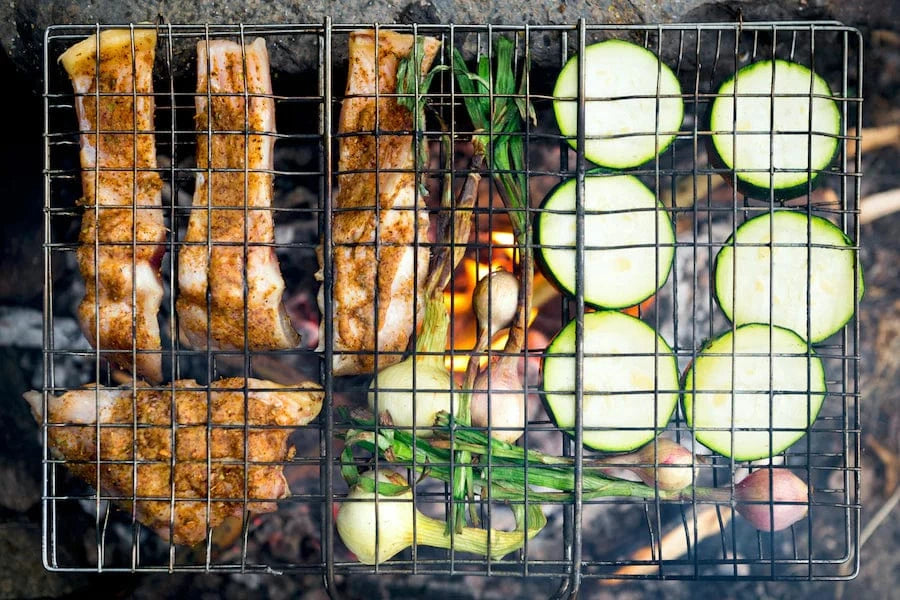
1. Make Your Own Food
Preparing all of your meals and snacks ahead may feel daunting at first, but we’ll let you in on a little secret: fresh food that’s cooked in the great outdoors just tastes better. With a little careful planning to minimize messes and simplify your off the grid efforts, you’ll be golden! A few of our favorite low-fuss camping foods are homemade soups, burritos, fried egg sandwiches, granola bars, marinated proteins and kebabs for the grill, muesli, and any other meals that can be partially or completely prepared ahead of time.
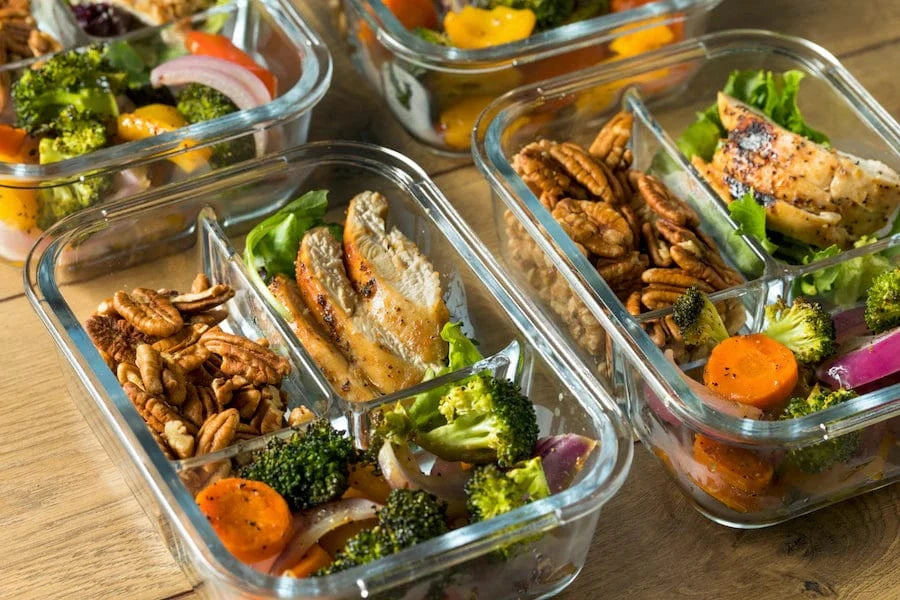
2. Cut Down On Packaging Waste
Bringing fresh food will help with this, but to take it a step further, pack all of your prepared ingredients and meals in reusable glass containers like mason jars or pyrex, and wrap homemade snacks like granola bars in beeswax wrap or cloth bags. Skip the plastic water bottles by bringing a few reusable bottles that can easily be filled from safe water containers. To play it safe, bring 1 gallon of water per person per day, and find out if drinking water filling stations will be available to replenish supplies if needed.

3. Take Out What You Bring In
Don’t be one of those campers — you know, the kind that leaves trash, recycling, and food waste behind to harm the environment and wildlife. To avoid this requires just a little planning ahead. Most campgrounds will offer a dumpster for trash, but find out if they offer recycling or composting, too. Either way, plan to bring at least two reusable waste containers — one for trash, one for recycling — and a tightly sealed compost bin if you want extra green points. At the end of your trip, take whatever you can’t dispose of at the campground with you.
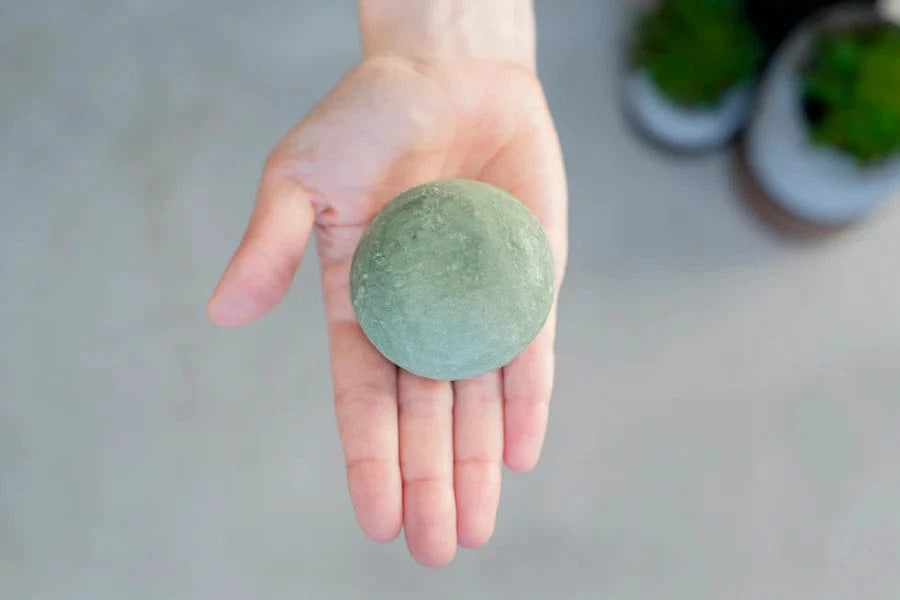
4. Use Biodegradable Care Products
Conventional soaps, hair care, and toothpaste can negatively impact wildlife and the environment. So make sure any products you do bring are biodegradable, and if washing up facilities are available, utilize those rather than doing it right at your campsite. If not, make sure you’re at least 200 ft away from any rivers, streams, or lakes. If no bathroom facilities are available, spray your toothpaste to disperse it instead of spitting it out in one spot. This is to protect any hungry pets or wildlife from eating it and getting sick.
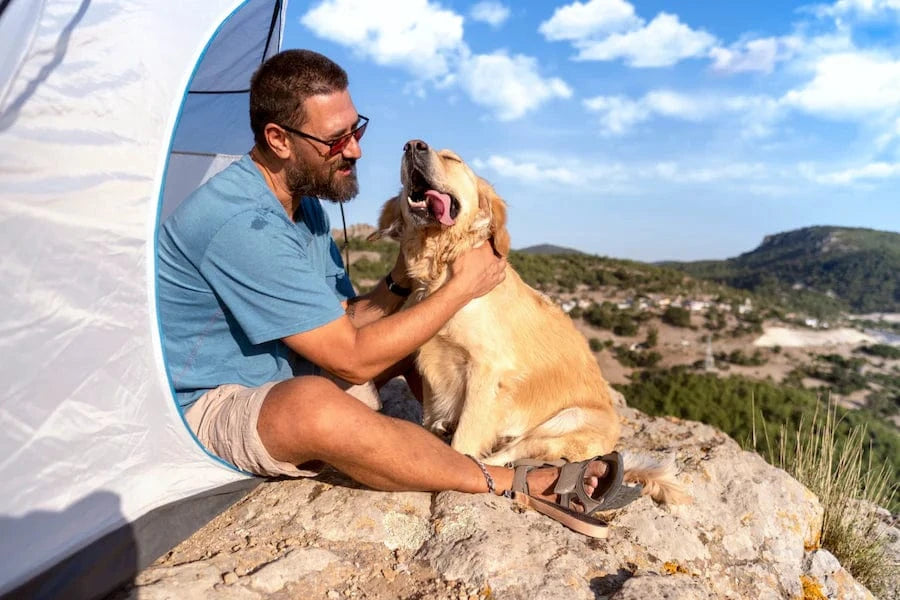
5. Manage Your Pets
Speaking of pets, if your dog will be joining you on this adventure, look into and follow any campground rules for pets, like wildlife designated areas, leash laws, and waste disposal guidelines. Keep their food sealed up tight to discourage any opportunists, bring biodegradable bags to clean up their waste, and if they’re prone to roaming or don’t have good recall, keep them leashed or on a line to avoid any scuffles with wildlife or damage to protected areas (your neighbors will definitely appreciate this consideration, too!).
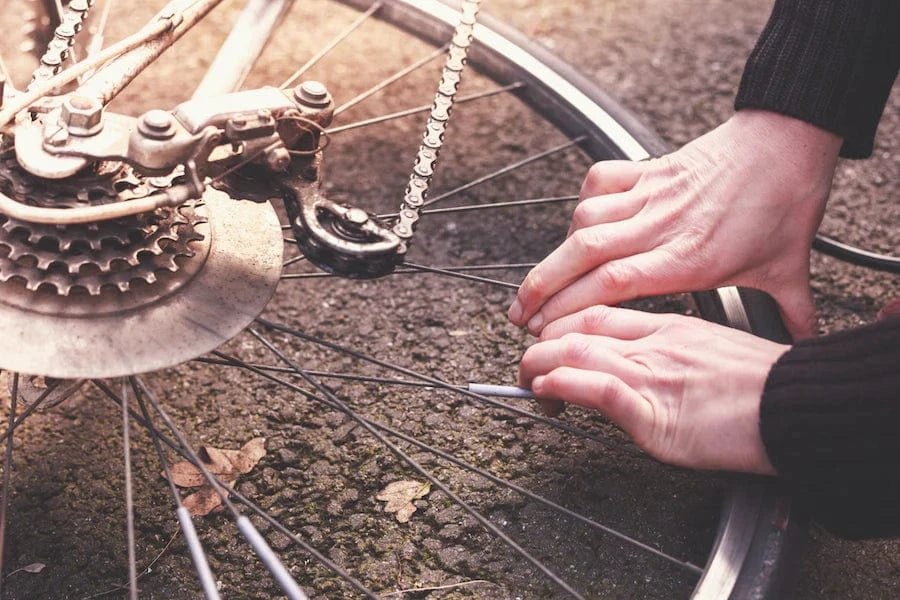
6. Repair Or Borrow Gear
While it’s easy to get caught up in the excitement of buying new camping gear when planning for a trip, it can be wasteful and expensive. Instead, take stock of everything you already have, repair what needs repairing (youtube is a gold mine if you need help), and try to get as much life out of your gear as possible. Another option is to buy used gear or borrow/rent things to save money and resources. This can be especially helpful if you’re just starting out and don’t yet know what kind of gear will best suit your needs.
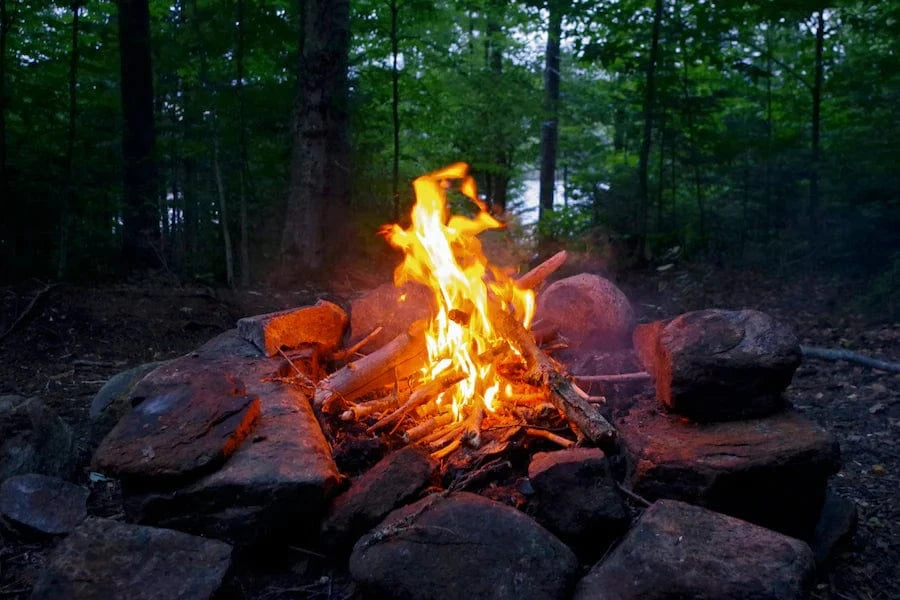
7. Build Safe Campfires
Depending on the area and time of year you go camping, you’ll have to follow specific guidelines when building campfires to avoid causing forest fires. If you’re in a wildfire-prone area, you may even need to skip the fire altogether. But if you can have one, make sure to build or use a provided fire pit circled with stone, and keep it to a reasonable size to reduce wildfire risk regardless of where you are. And while we're on the subject: your campfire is not the right place to dispose of waste like plastic bottles, aluminum cans, or trash — all of which are air and soil pollutants when burned.
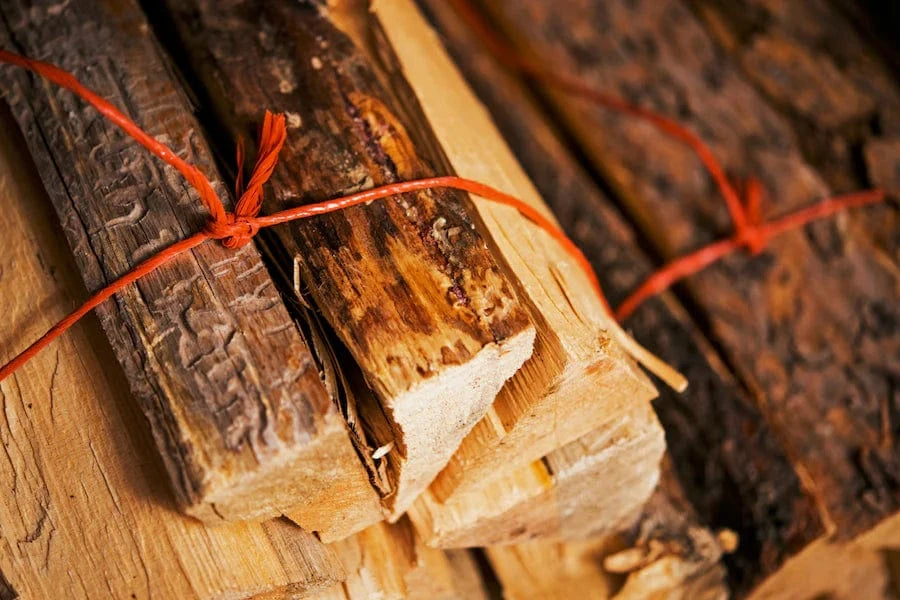
8. Purchase Firewood Locally
Speaking of campfires, you'll need to get your firewood locally or from the campground if they carry it. Yes, bringing your own wood from home might save you money, but it could have potentially disastrous effects on the forest around you. With the rise of invasive insects like the emerald ash borer, asian long-horned beetle, hemlock woody adelgid and others, local conservation districts are urging people: “don’t move firewood” and may even fine you in some areas. So do your part to protect the trees and forest around you from invasive insects!
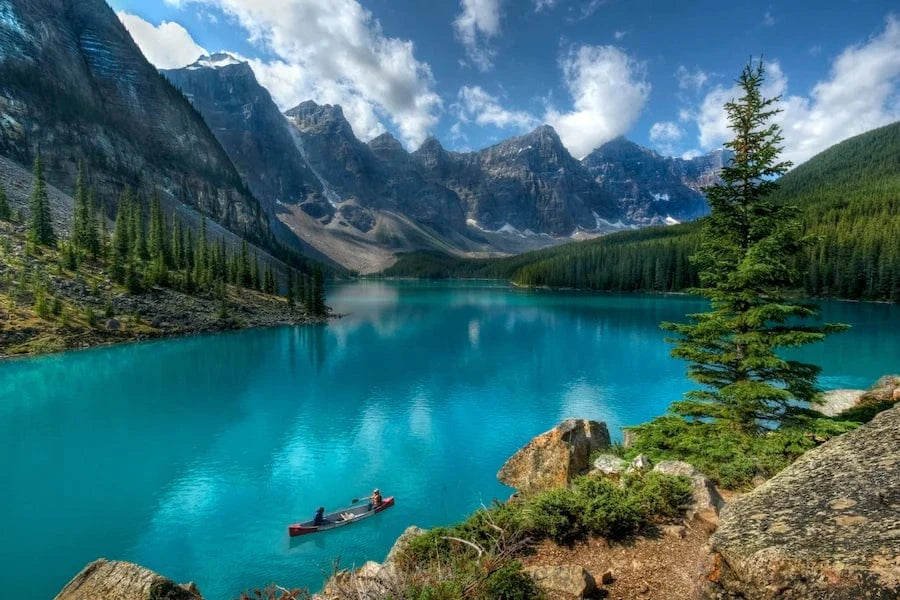
9. Don’t Pollute Waterways
Many of the things we apply without second thought, like suntan oils, bug spray, lotions, makeup, and sunscreen, can pollute water bodies and harm the aquatic species that call them home. Of course, some of these are necessary to protect you against sunburns and insect-borne diseases. But try to be conscious of the correct amount to apply and the ingredients they contain — especially if you plan to go swimming. And if something is water-soluble, the best bet is to leave it at home.
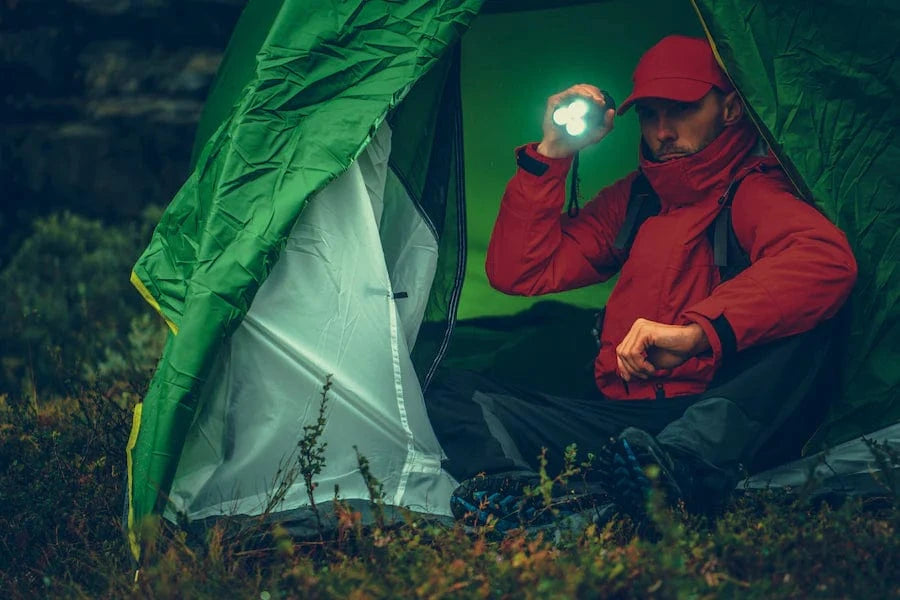
10. Reduce Battery Waste
One of the greatest things about camping is the opportunity to unplug from the electronics that otherwise dominate our lives, helping to reset our circadian rhythm. But of course, some battery-powered electronics will be necessary, like flashlights, headlamps, lanterns, and air mattress pumps. To avoid creating unnecessary battery waste, invest in a few sets of rechargeable batteries or solar-powered electronics and make sure everything’s charged up and ready to go. And don't worry, they'll pay for themselves over time!

11. Ditch Single-Use Products
Replace the plastic cutlery, paper plates, plastic straws, paper towels, and plastic cups with sturdy, well-designed utensils and quick-dry towels for your cleanup needs. The right gear will last for years to come, will be easy to clean and reuse, and will reduce the amount of trash you have to carry out at the end of your trip. The first time you camp without single-use products, you might be amazed at how little trash you produce. You could even make a game out of it: whoever creates the least trash gets a prize and bragging rights (until next year, anyway!)
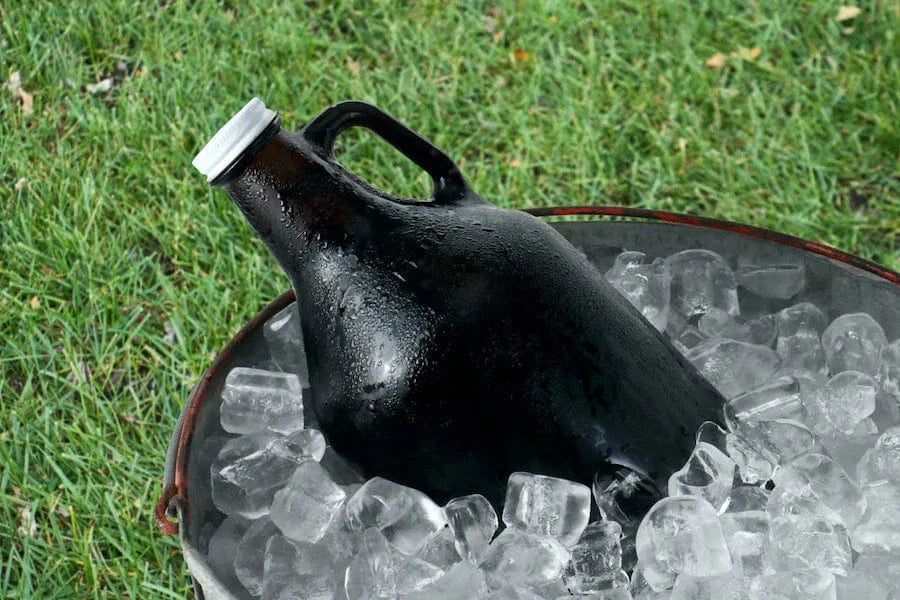
12. Bring a growler
If enjoying a beer or two around the campfire is your kind of thing and you have access to a local brewery that will fill it for you, consider tossing a few growlers of your favorite beer in your cooler (or bringing a keg!). This will not only ensure you’ll have some great beer to drink while regaling your friends or family with all of your best campfire stories, it will also eliminate the need to lug around cases of beer. And when you leave, you’ll be happy not to have to haul out bags of beer bottles and cans to recycle at home. Just be respectful of campground alcohol rules!
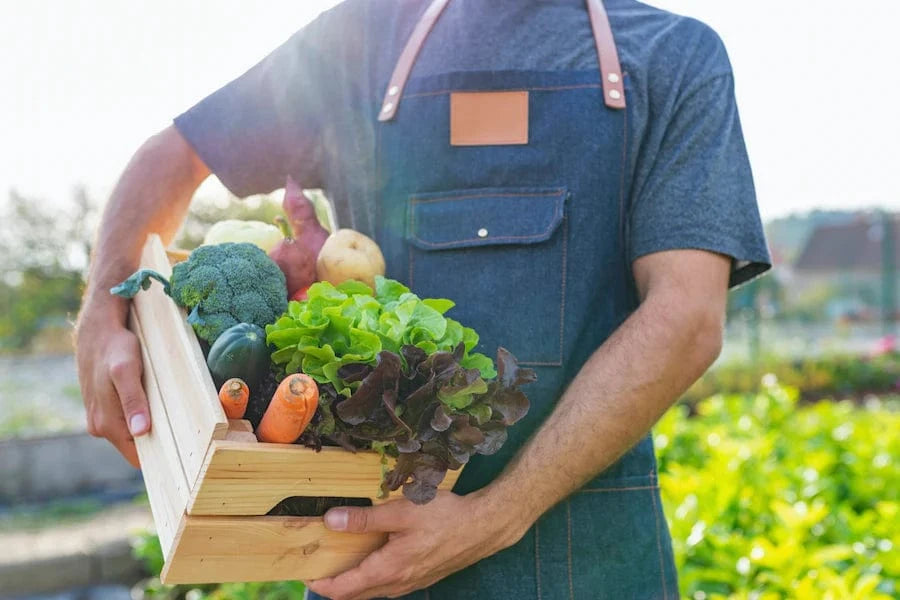
13. Shop Local And Organic
Food comes up a lot on this list, because it’s one of the biggest contributors to your camping footprint and arguably the thing that requires the most planning ahead. Up your eco game by making sure all of the ingredients for those delicious meals are local and organic. While food quality is a less obvious connection than the other tips we’ve shared, it does play a big role in your impact. Conventionally grown foods typically use a lot of fertilizers and pesticides and are shipped from far away, while local, organic foods are grown on nearby farms that use eco-friendly agricultural methods.
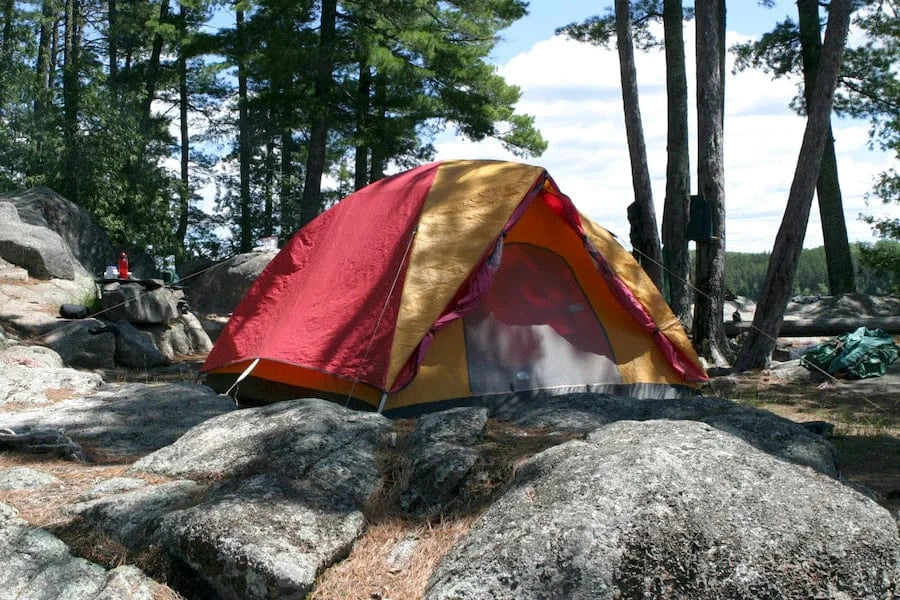
14. Mind Your Physical Footprint
When setting up your tent and camp area, it’s important to select durable terrain with sparse vegetation like rock, gravel, snow, formed trails, and dry grass. This will help you minimize your impact on the the soil and avoid crushing any sensitive native vegetation. Make your camp small, set up at least 200 ft away from any lakes, rivers, and streams, and stick to existing trails and campsites. And one final tip: avoid depressions or other areas where water could pool during rainstorms, as waking up in a puddle of water is not the best way to start your day!
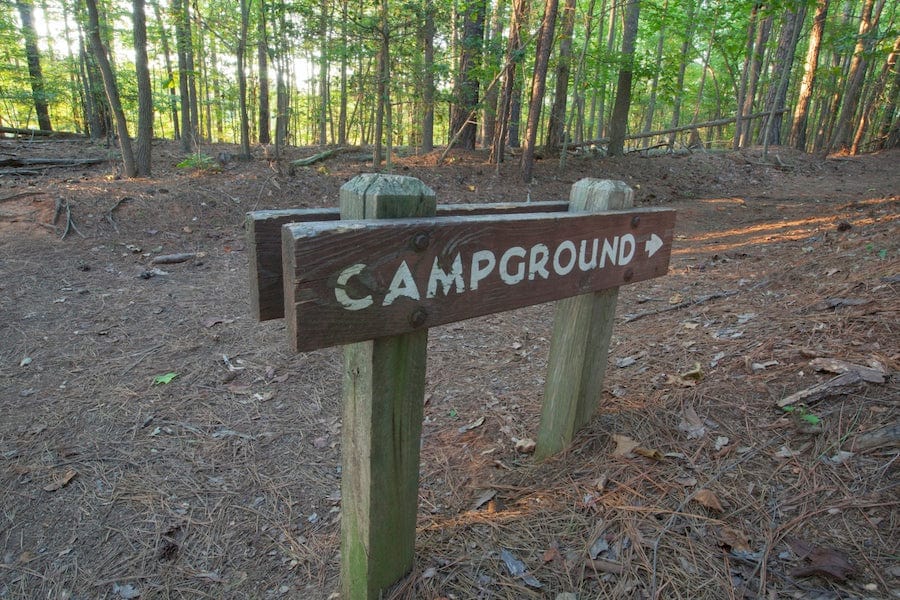
15. Visit During Low Season
Popular camping spots can get really busy during high season, which puts a strain on the environment. So consider visiting these areas at off-peak times like the beginning or end of the season, when they’re less likely to be overcrowded. If you really want to go camping during peak season, consider finding a more off the beaten path campground for your adventure. Another thing to consider is how your visit may affect area wildlife — for example, it may not be a good idea to camp during mating season for native animals, as it could disturb their activities.
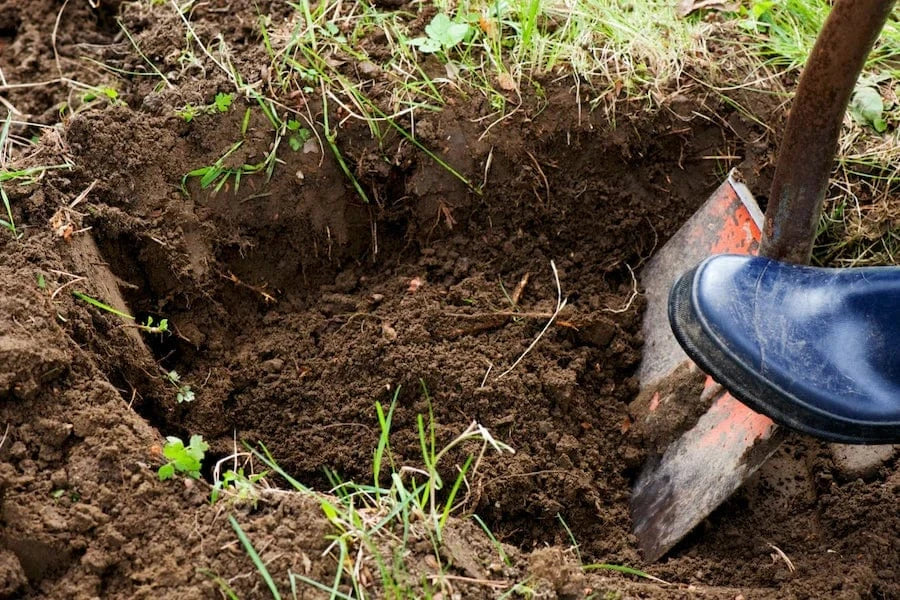
16. Don't Mix Business And Pleasure
If you’re at a campground with bathrooms and washing facilities, this will be easy. But if you’re on more of a backcountry adventure, there are a few considerations to follow to respect other campers and avoid polluting water supplies. Find a private spot away from anyone else’s site, stay away from trails, and keep at least 200 feet away from food or water sources. Dig a small hole in the ground (a small trowel or shovel will be handy for this), take care of business, bury it well, and take any toilet paper with you. And that should do it! But to be on the safe side, be sure to research the area's rules, as they can vary.
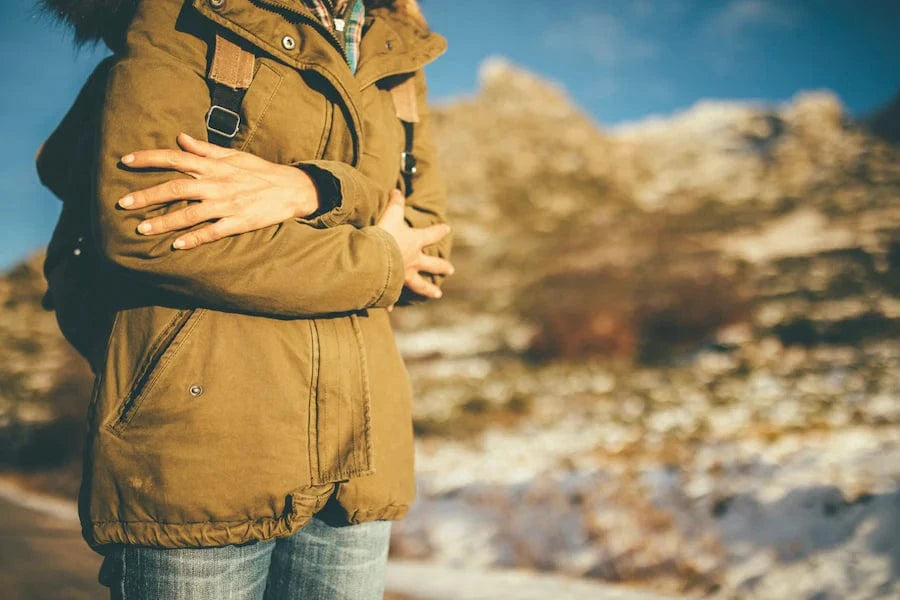
17. Purchase Eco-Friendly Outdoor Gear
From blankets to clothing to sun hats, sunglasses and more, there are tons of sustainable outdoor gear options, so you shouldn’t have any trouble finding what you need. But to make it cheaper and also participate in the circular economy, check out your local thrift store or used sports store to find quality gear at a steep discount. You never know what you’ll find — and because so many people over-purchase and under-use outdoor gear, you may even be able to score unused or barely used name-brand stuff that will last you for years to come. It's definitely worth doing a little shopping around to get the best deal!
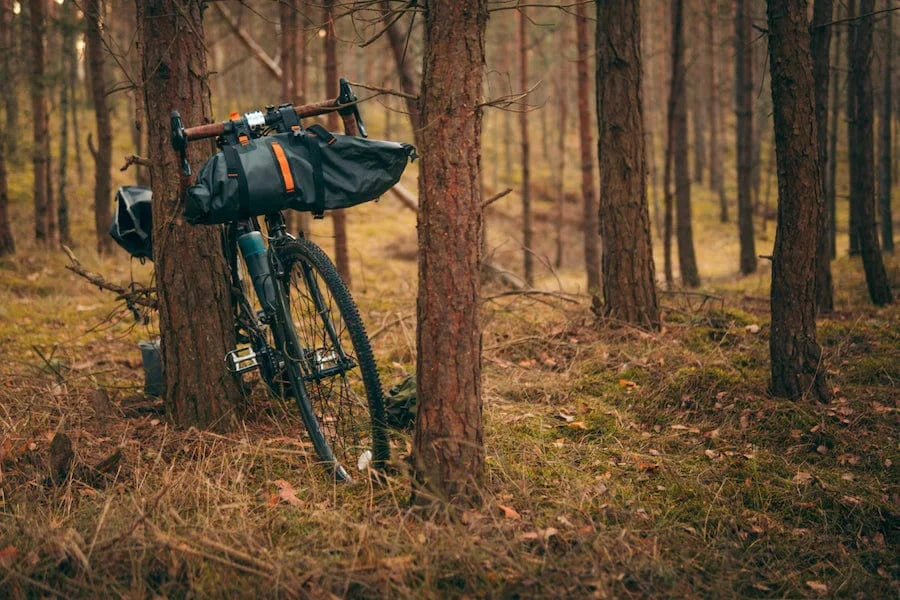
18. Minimize Your Travel Footprint
Before you go, think carefully about how you’ll be getting to and from your campsite. If you're camping with friends, consider carpooling to reduce your emissions. If you’re adventuring from home, see if there are any buses or trains that will get you there before you book a plane ticket. If you cant do any of these things, think about the impact your traveling has, and think of any ways big and small that you can minimize it with sustainable travel. Every step counts and we can all improve somewhere!
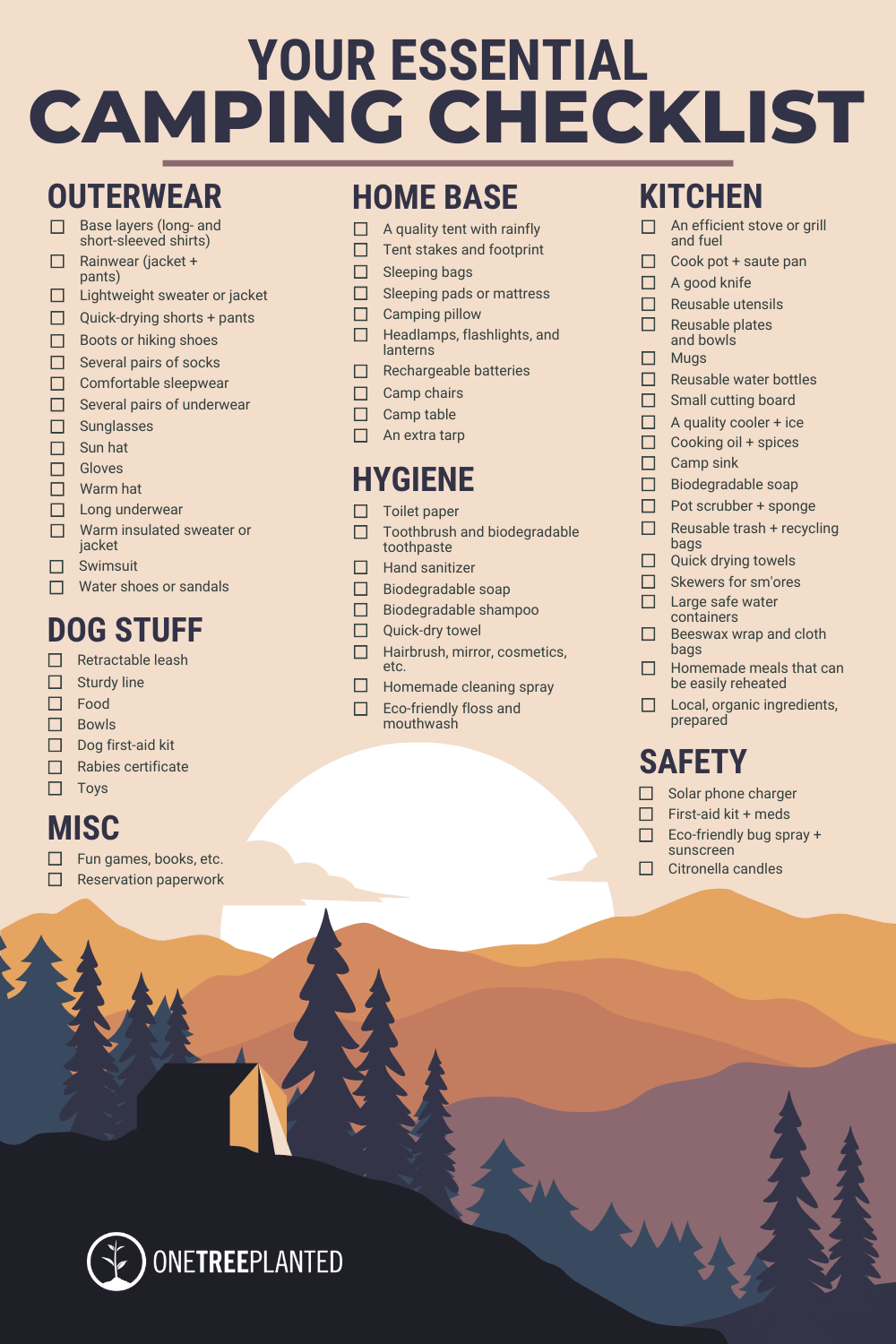
We hope our sustainable camping guide and checklist inspire you to go camping for the first time, or green up your existing camping routine to make it more respectful of the environment. And wherever you choose to pitch a tent, we hope you have a wonderful trip filled with late nights, deep conversions under the stars, cozy campfires and s’mores, fun hiking adventures, and above all a nice big dose of the great outdoors!
Speaking of the great outdoors, consider planting trees to benefit nature and the environment today!
Get news, updates, & event Info delivered right to your inbox:
Related Posts
Why Trees Are Great Holiday Gifts
04/12/2025 by Meaghan Weeden
Real vs. Fake Christmas Trees: Which is Better For the Environment?
20/11/2025 by Meaghan Weeden
8 Reasons to be Grateful for Trees This Thanksgiving
18/11/2025 by Meaghan Weeden
Popular On One Tree Planted
What Causes Deforestation?
10/07/2025 by Meaghan Weeden
8 Amazing Bamboo Facts
14/01/2025 by Meaghan Weeden
Inspirational Quotes About Trees
09/01/2025 by Meaghan Weeden
Fundraising Disclosures

Be Part of the
Restoration Movement
The Grove is more than just a monthly giving program: it's a vibrant community of individuals who are dedicated to reforestation and environmental restoration on a global scale.
As a member of The Grove, you affirm your commitment to restoring forests, nurturing biodiversity, and fostering positive global change.





